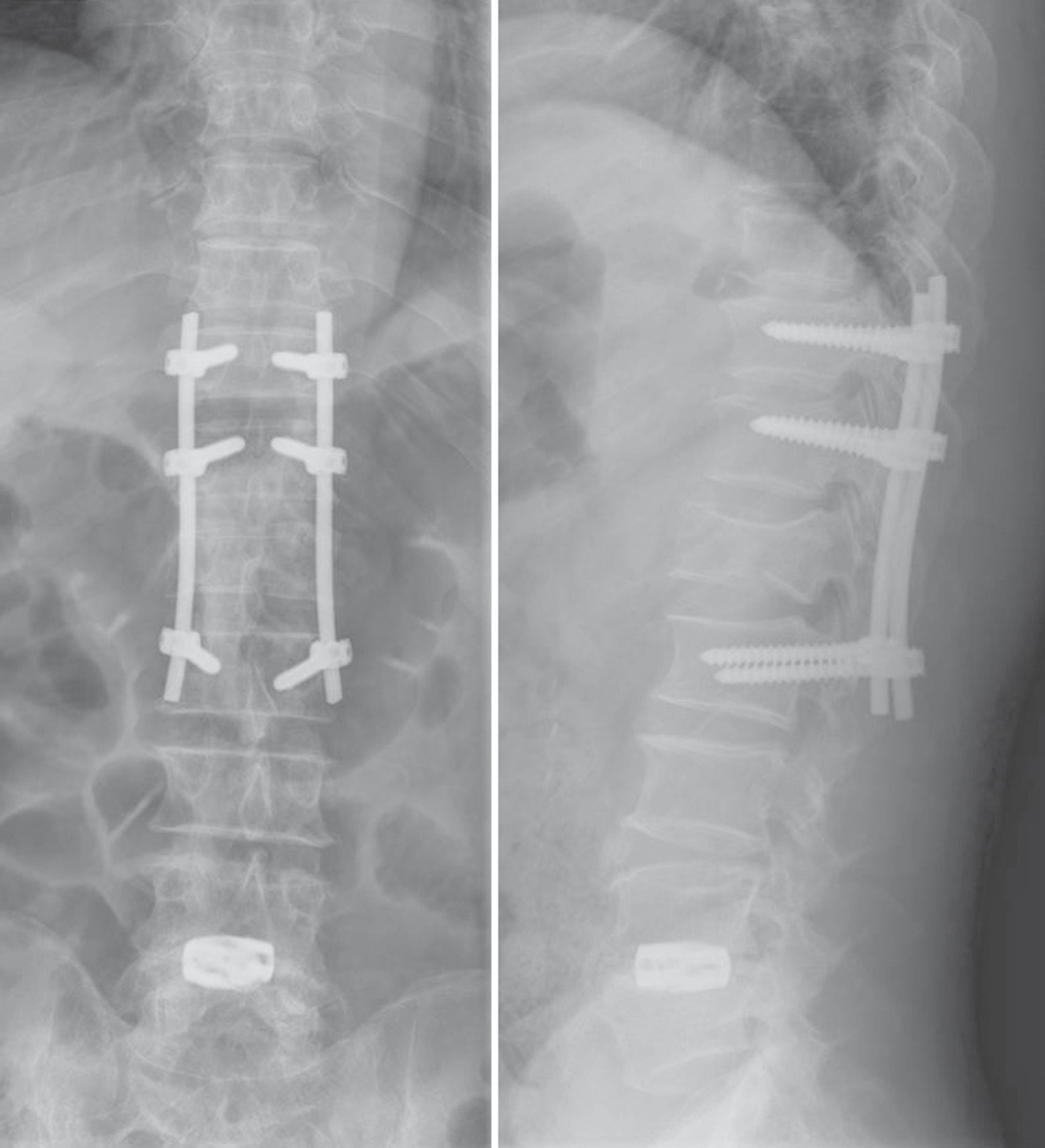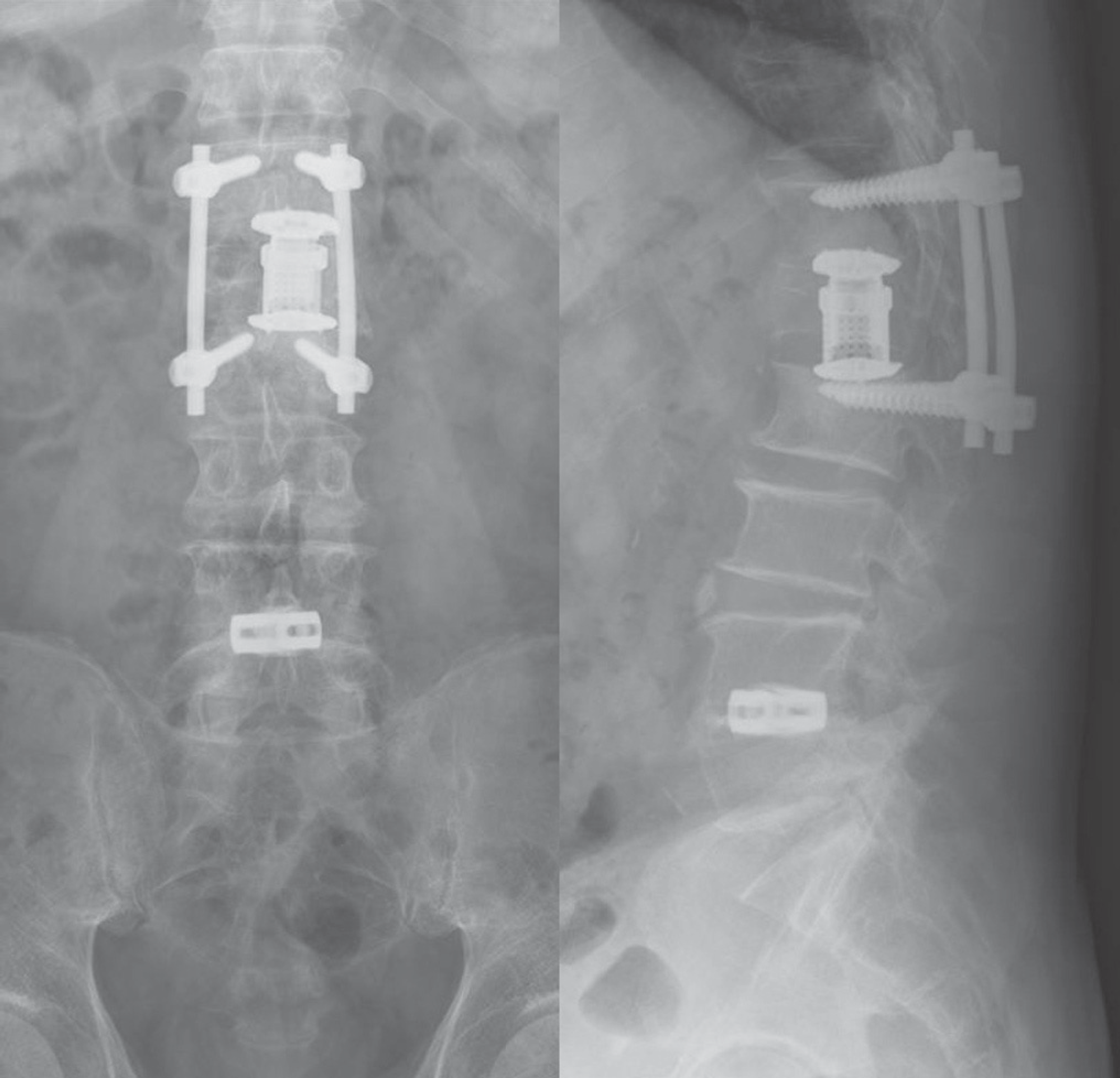Abstract
Objectives
Lumbar burst fracture was treated with operation, which delayed recollapse of L1 and led to conus medullaris syndrome.
Summery of Literature Review
After operation, conus medullaris syndrome causing by delayed recollapse is not frequently reported.
Materials and Methods
A 56-year-old male was admitted with lower back pain caused by a fall. Radiologic findings showed L1 burst fracture with about 42% of height loss. There was no neurologic deficit. Posterior fusion was performed using instrumentation. Five weeks after the operation, the patient was admitted for urination and defecation difficulty. Radiologic findings showed that the L1 had recollapsed with about 38% of height loss. To resolve the problem, anterior surgery was performed.
REFERENCES
1. Shim DM, Kim TK, Song HH, Ha DH, Kim KJ. Neural injury and recovery of the thoracolumbar spine fractures. J Korean Soc Spine Surg. 2001; 8:413–8.

2. Tanaka S, Kubota M, Fujimoto Y, Hayashi J, Nishikawa K. Conus medullaris syndrome secondary to an L1 burst fracture in osteoporosis. A case report. Spine (Phila Pa 1976). 1993; 18:2131–4.
3. Dall BE, Stauffer ES. Neurologic injury and recovery patterns in burst fractures at the T12 or L1 motion segment. Clin Orthop Relat Res. 1988; 233:171–6.

4. Kim KC, Hwang CS, Chung PH, et al. Conus medullaris syndrome(isolated type) associated with L1 fracture. A case report. J Korean Soc Spine Surg. 1995; 2:119–23.
5. Kostuik JP, Harrington I, Alexander D, Rand W, Evans D. Cauda equine syndrome and lumbar disc herniation. J Bone Joint surg Am. 1986; 68:386–91.
6. Shepherd RH. Diagnosis and prognosis of cauda equine syndrome produced by protrusion of lumbar disc. Br Med J. 1959; 2:1434–9.
7. Keene JS, Fischer SP, Vanderby R Jr, Drummond DS, Turski PA. Significance of acute posttraumatic bony encroachment of the neural canal. Spine (Phila Pa 1976). 1989; 14:799–802.

8. Denis F. The three column spine and its significance in the classification of acute thoracolumbar spinal injuries. Spine (Phila Pa 1976). 1983; 8:817–31.

Fig. 1.
(A) Initial anteroposterior and lateral view of plain radiographs shows body height loss about 42% because of burst fracture on L1. (B) Initial CT images shows canal encroachment about 50% on L1. (C) Initial MR images shows relation of fracture and dural sac on L1.

Fig. 2.
Postoperative anteroposterior and lateral view of plain radiographs shows reduction of body height loss about 12% on L1.

Fig. 3.
(A) Five weeks after operation, anteroposterior and lateral view of plain radiographs images shows body height loss about 38% because of recollapse of burst fracture on L1. (B) CT images shows canal encroachment about 40% on L1.





 PDF
PDF ePub
ePub Citation
Citation Print
Print




 XML Download
XML Download